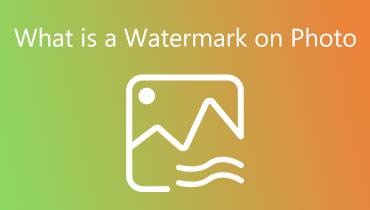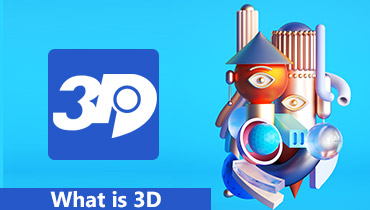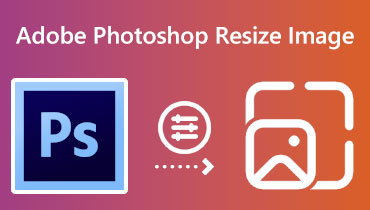All Things You Need to Know About 1440p Images
Having a high enough resolution is essential for producing high-quality images. This way, there won't be any blurring or noise in the final product. Inadequate picture resolution is to blame for the poor quality of some posted photos. In addition, if you are not very interested in photography, you are unlikely to be familiar with these resolutions. Because of this, we will sustain you with the most comprehensive assessment possible of 1440p images in the following paragraphs.

- Part 1. What Are 1440p Images
- Part 2. 1080p vs. 1440p
- Part 3. 1440p vs. 4K
- Part 4. How to Enhance 1440p Images
- Part 5. FAQs About 1440p Images
Part 1. What Are 1440p Images
The 1440p resolution, which delivers a resolution that is equivalent to that of Quad HD, can only be achieved on screens that have a width of 1440 pixels. 1440p provides higher resolutions than Full HD 1080p or 2K while using fewer CPU resources for graphics applications such as video games.
It is essential to make it abundantly clear from the beginning that 1440p does not mean that there are 1440 pixels across the horizontal axis and 1440 pixels along the vertical axis. Instead, it indicates 2560 pixels across the horizontal axis and 1440 pixels along the vertical axis. 1440p is not the ideal resolution to choose if you want to play ultra-high definition games or watch movies in 4K. 1440p is not the best higher resolution for gaming, as it does not deliver the same number of pixels as other resolutions.
However, issues arise when 1440p is used with programming created by significant television studios, often only accessible in lower resolutions. TVs often only come in 1080p or 720p, despite the higher resolution's superior picture quality. Because of this, 1440p became the standard in the gaming industry, whereas 1440p is promoted by players who prefer to spend more cash on trimming equipment.
Part 2. 1080p vs. 1440p
When comparing 1440p to 1080p, we can conclude that 1440p is superior to 1080p. Because it offers a bigger screen real estate layout, more sharpness accuracy in picture definition, and more screen surface workspace. The abbreviation 1080p refers to a screen resolution of 1920 pixels wide and 1080 pixels high while maintaining a 16:9 aspect ratio. The picture quality of 1080p in Full HD is up to five times greater than 720p, which is a considerable increase and is not something that can be upscaled from 720p to 1080p. 1080p in Full HD delivers Full HD resolution. 1080p uses less storage space. The term 1440p refers to a resolution with an aspect ratio of 16:9 and a pixel count of 2560 by 1440.
Part 3. 1440p vs. 4K
Video games may have high-resolution visuals at 1440p or even 4K. If you're a gamer wanting to replace your existing 1080p monitor or TV, 1440p may be a good alternative. The resolution of a 1440p display, commonly known as QHD (Quad HD), is twice that of a standard 720p HD screen. 1440p has a quality of 1440 pixels, which is close to either 2K or 4K in terms of pixel count. 1440p provides customers with an excellent mix between the performance requirements of modern games and the resolution required to support them.
1440p provides a screen resolution of 2560 by 1440 pixels, whereas 4K provides a resolution that is much greater at 3840 by 2160 pixels. If you're a gamer who wants to elevate their gaming experience to the next level without blowing your budget, 1440p is your resolution. It provides excellent clarity and a satisfying level of detail and does it without costing a fortune. 1440p strikes a nice mix between 1440p and 4K in terms of image quality. The resolution of 1440p provides viewers with sufficient pixels to experience sharp visuals. Yet, at the same time, it does not need nearly as much computing power as 4K resolution would. 1440p takes less computing power than 4K, which might help you save money in the long term. If you can afford it, you should consider upgrading to 4K.
Part 4. How to Enhance 1440p Images
You may upload the low-quality photographs you have to 1440p resolution with the assistance of Vidmore Free Image Upscaler. It is less restrictive than previous tools of its kind and supports artificial intelligence technologies. Imagine that we are at the point where we can assess this technology in the context of the image that is just given. This tool's support for artificial intelligence technology is essential in situations like these.
When you upload an image to our website, you can scale it up and make it larger by up to eight times without causing any loss in the image's original quality. Registration is not required in this online tool, and no intrusive adverts or processing limitations are imposed on the images.
Step 1: You may upload the picture you want to adjust the size of by clicking on the icon labeled Upload Image. After that, it will provide you with a directory. Inside, you will have the option to delete the file or explore it to discover it.
Try Image Upscaler Now!
- Improve photo quality.
- Enlarge picture to 2X, 4X, 6X, 8X.
- Restore old image, unblur photo, etc.

Step 2: After you have uploaded the file, the program will begin using AI to figure out what the file is. You will now see a pull-down option next to the picture you want to resize. You can choose the Magnification level that best suits your needs from this menu. It is essential that you experiment with each one to determine which one works best with your unique personality.

Step 3: After making edits, choose the picture you want to export and click the Save button. The exported image will have the revised dimensions.

Part 5. FAQs About 1440p Images
What is a good picture with a high resolution?
At least 300 pixels are packed into each inch of a high-definition picture. This resolution results in decent print quality and is almost necessary for everything you want to be reproduced in hard copy, mainly to reflect your brand or other critical printed documents accurately.
Does a bigger image mean that the resolution is better?
If the resolution is higher, there will be more pixels per inch (PPI). It will result in more pixel information, resulting in a picture of a higher quality and sharper.
Which is preferable, PNG or JPEG?
PNG is a very high-quality graphics format and generally has a more excellent quality than JPEG files, which are compressed to conserve space. The PNG file format is generally considered a replacement for the GIF file format because it employs lossless compression.
Conclusions
With the help of the article above, 1080p vs. 1440p image comparison, we can say that 1440p images still perform and provide excellent image quality. You may rely on the picture enhancer above, the Vidmore Free Image Upscaler Online tool if you have an image of poor quality.


